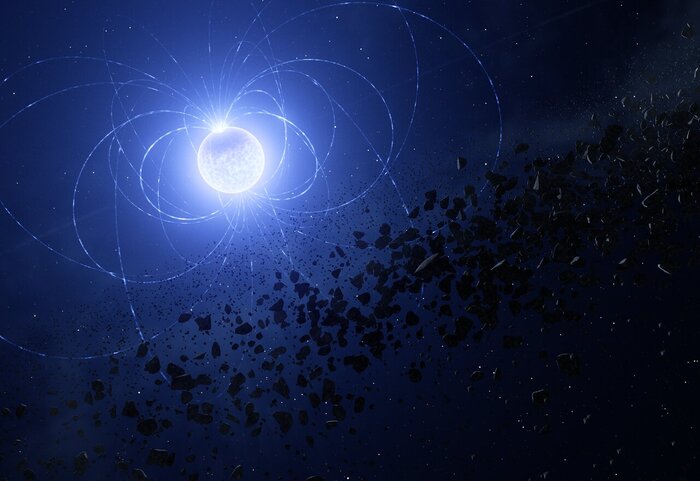Enlarge image
Graphic representation of a small asteroid near Earth
Photo: NASA/ Reuters
In the night from Thursday to Friday the time has come: The recently discovered asteroid 2023 BU comes much closer to our earth than many satellites.
According to the US space agency Nasa, it is one of the closest known flybys of a near-Earth celestial body.
At 01:27 German time early Friday morning, according to the calculations, the asteroid should approach the earth by up to 3600 kilometers.
It is located at the southern tip of South America.
For context: the International Space Station is much closer to Earth, orbiting at an altitude of about 400 kilometers.
Communication and weather satellites, on the other hand, are much further away, for example they orbit around 36,000 kilometers.
There is a high degree of certainty that there is no danger from the cosmic chunk – it currently measures between 3.5 and 8.5 meters.
If it were on a collision course with Earth, it would likely break up and burn up as it flew through the denser layers of the atmosphere.
Only smaller fragments would then probably be found as meteorites on the earth's surface.
Not the discoverer's first exciting find
According to NASA, the approaching asteroid was discovered on January 21 by telescope technician Gennady Borissov, who works at an observatory at Lomonosov Moscow State University in Crimea.
Borisov had already made headlines in 2019 when he tracked down the interstellar comet 2I/Borisov: This was the second known object after 1I/ʻOumuamua to have crossed our solar system from outside.
But Borissow keeps finding other, previously unknown, near-Earth celestial objects - like now 2023 BU.
Because they are so small, such bodies are often only discovered in close proximity to Earth.
That would be a problem if there were to be a serious impact on the surface: there would be little time for precautionary measures in the affected area.
It would be different with larger asteroids that are threateningly approaching the earth.
They pose a real danger to life on earth, at least in the long term. In the past, there have always been serious impacts, for example when the impact of a 14-kilometer asteroid off the coast of Mexico around 66 million years ago played a decisive role was responsible for the fact that the dinosaurs disappeared from the earth.
In the future, on the other hand, long-term diversion strategies could possibly completely avoid a crash.
In order to test the necessary techniques, NASA last year sent the “Dart” spacecraft into the small asteroid moon Dimorphos – and was actually able to deflect its trajectory.
The European probe "Hera" is to be launched next year in order to be able to better assess the impact of the shock.
chs







/cloudfront-eu-central-1.images.arcpublishing.com/prisa/XY3C6N54G4B3XBPGV7YLE3AUKM.jpg)
